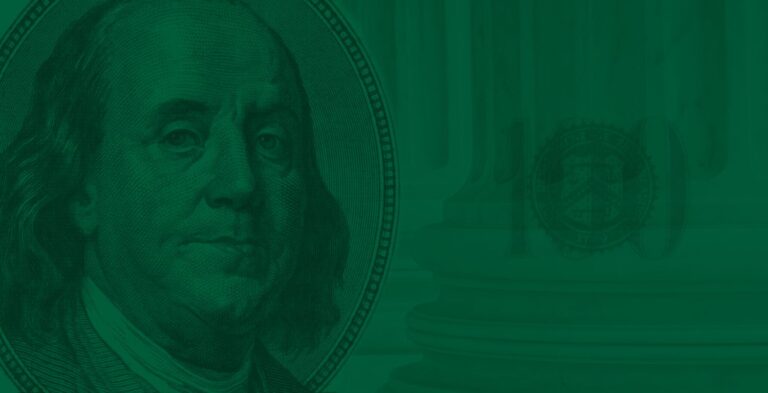Market and Economy
Diligence is the mother of good luck
Benjamin Franklin

Economic and Market Review June 2025
• The Fed maintained hawkish stance through June, with 80% of economists projecting Fed Funds Rate will not fall below 3.75% during 2025, as tariff considerations fundamentally altered monetary policy calculus
• Current fiscal trajectory projects 2.9% lower real GDP by 2054 due to higher-for-longer interest rates and government spending redirection toward debt service obligations.
.• Core PCE reached 2.7% (10bps above expectations), indicating continued inflationary pressure.
.• Oil price volatility reflecting diminished OPEC+ production discipline alongside Middle Eastern conflict fears.

Economic and Market Review May 2025
• Trump’s 90-day tariff pause expires July 9th with minimal progress on trade deals – only the UK has agreed to a largely symbolic arrangement
• US-China tensions persist despite temporary tariff reductions from 145% to 30%, Trump and Xi scheduled to speak in early June.
.• Moody’s downgraded US debt from Aaa to Aa1 following Fitch and S&P, with credit default spreads reaching two-year highs amid fiscal concerns over the expanding deficit trajectory.
.• India emerges as the primary beneficiary of trade tensions, posting 7.4% GDP growth with manufacturing up 4.8% and record smartphone exports to the US rising 30.1% year-over-year.

Why We Hold Gold and Gold Stocks
• Gold serves as a critical hedge against current economic headwinds including economic uncertainty, mounting US deficit, tariff effects, and geopolitical instability.
• The US deficit problem is severe, with the fiscal year ending September 2024 showing a $1.8 trillion deficit (6.4% of GDP), and projections for 2025 exceeding $1.9 trillion.
• The Federal Reserve has raised inflation expectations to 2.8% for 2025, indicating anticipated acceleration of inflation during the year.
• Central banks globally have been shifting away from US Dollars, especially in developing countries.

Economic and Market Review April 2025
• Over 70% of Americans expect worse business conditions in 12 months—the highest level since 2008.
• April saw extreme financial volatility with gold hitting record highs and the VIX spiking, though equity and bond markets partially rebounded after the Trump administration softened tariff rhetoric and affirmed Fed independence.
• A surge in Q1 imports (+41.3%) was driven by firms and consumers front-loading purchases, particularly autos, before tariffs, which will fully take effect July 8
• Real GDP contracted 0.3% in Q1 2025, with government spending falling and consumer spending slowing to +2.3%, signaling softening demand despite continued strong consumption in tariff-sensitive categories.

Economic and Market Review March 2025
• Trump’s shifting tariff policies are creating market uncertainty, with inflation indicators rising and consumer confidence hitting a 12-year low
• The federal deficit has reached nearly $1.3 trillion for the first five fiscal months—approximately $500 billion more than last year
• OECD has downgraded global GDP growth projections to 3.1% in 2025 and 3.0% in 2026
• Germany has modified its debt brake to exempt defense spending and add €500 billion for infrastructure, aiming to increase defense spending to 3.5% of GDP by 2030
• China’s manufacturing PMI increased to 50.5 in March, with industrial output up 6.9% in early 2025 despite tariff concerns

Economic and Market Review February 2025
• European equities outperformed the U.S., driven by defense stocks and a moderate recovery in industrial activity.
• The U.S. housing market hit a historic low, with the Pending Home Sales Index showing the weakest January in 25 years due to high mortgage rates (7.04%).
• The top 10% of earners now account for over 50% of total U.S. consumer spending, compared to 36% in the 1990s.
• The consumer savings rate reached a 6 month high, with lower-income groups rebuilding savings, leading to a downturn in consumer spending.
• Fund managers are increasingly worried about stagflation, and economic surprises have turned negative again in 2025.
• U.S. physical gold supply is tightening, causing leasing rates to spike and price spreads between London and U.S. gold markets to reach a five-year high.

Economic and Market Review January 2025
• US stocks had a volatile start to the year, with the Fed keeping rates steady, new trade uncertainty, and disruptions in the tech industry.
• Trump announced new potential tariffs on Mexico, China and Canada, sending gold to new all time highs and routing crypto.
• China’s DeepSeek R1 AI model, reportedly trained for just $6 million, triggered a 3.5% drop in the NASDAQ and a 12.8% decline in NVIDIA (NVDA), while US regulators launched a probe into potential violations of semiconductor export controls.
• US economic data showed manufacturing optimism but slowing services due to continued inflationary pressures.
• The Baltic Dry Index (BDI) dropped 25% to a 23-month low, reflecting weaker industrial demand globally and shipping overcapacity.

Bond Yields Up Even as Fed Cuts: What Could it Mean for Your Portfolio? Deficits, DOGE and Inflation
• The U.S. faces a massive $2 trillion federal budget deficit, with limited room for cuts in key areas such as Social Security, Medicare, defense spending, and interest expenses.
• DOGE (Department of Government Efficiency) unlikely to make real progress.
• Despite the Federal Reserve’s rate cuts, long-term Treasury rates and mortgage rates have risen significantly, almost inversely.
• Long-term bonds are now riskier due to rising inflation and interest rates, leading to both declining bond prices and eroding purchasing power.
• Higher interest rates increase the discount rate for future earnings, potentially lowering stock valuations.
• If inflation persists and interest rates rise further, the Federal Reserve may reintroduce quantitative easing, which could accelerate inflation.
• Reduced global confidence in U.S. treasuries is leading some countries to pivot toward alternatives like gold and Bitcoin.

Economic and Market Review December 2024
• In 2024, the S&P500 surged by 23%, continuing its strong performance from 2023 and achieving the best back-to-back gains since the late 1990s.
• US equities now account for 67% of global equity markets.
• Despite the US 30-year fixed mortgage rate climbing to 7.0%, the housing market remained strong with median home prices increasing by 48.2% compared to pre-pandemic levels.
• The Treasury faces significant challenges in rolling over $3 trillion in short-term debt, which could lead to higher long-term yields and potential market instability.
•The Federal Reserve revised its inflation projections upward for the next few years, indicating a higher terminal rate and limiting the number of rate cuts in 2025.
• Congress temporarily extended funding through March 2025, but the looming debt ceiling poses a risk of default.

Economic and Market Review November 2024
• November was a strong month for markets, with the S&P 500 achieving its best year-to-date performance since 2013, driven by optimism post-election.
• The U.S. ended its fiscal year with a $1.83 trillion deficit, the third-largest on record, with spending far outpacing receipts.
•Proposed deficit reduction plans aim to cut spending, but significant hurdles remain in addressing entitlements and achieving sustainable debt levels.
• Credit card balances are climbing, especially among prime borrowers, while delinquency rates are higher than pre-pandemic but still below 2008 peaks.
• Black Friday spending rose 3.4% YoY, with online sales surging 14.6%, partly driven by increased use of Buy-Now-Pay-Later (BNPL) agreements.

Deficit Dilemma Update: Inflation and Sectoral Shifts in a New Administration
• The DOGE (Department of Governmental Efficiency) Committee faces significant challenges in addressing the $2 trillion deficit, with most expenditures politically untouchable.
• Inflation is expected to rise by 2025, driven by persistent deficit spending and nominal GDP growth.
• Gold remains a strong long-term hedge despite recent sell-offs, with equities favored over bonds during inflation.
• Natural gas may see growth due to rising electricity demand, while crude oil demand remains stagnant.
• Healthcare reform faces resistance due to lobbying, despite inefficiencies driving up costs significantly.
• Subsidies for green energy and electric vehicles may decrease as deficit concerns take priority.

Economic and Market Review October 2024
• GDP grew by 2.8%, with inflation cooling to 2.4%, though food and shelter costs remain high.
• Job openings dropped to a three-year low, and layoffs reached their highest since 2020.
• 33% of auto loans are underwater, with record-high negative equity and increasing defaults.
• Rising deficit and long-term inflation fears push Treasury yields higher, impacting future rate cuts.
• The Top 10 US Companies now make up 18% of global stock market capitalization. The S&P500 is now a record high 46% of Global GDP.

